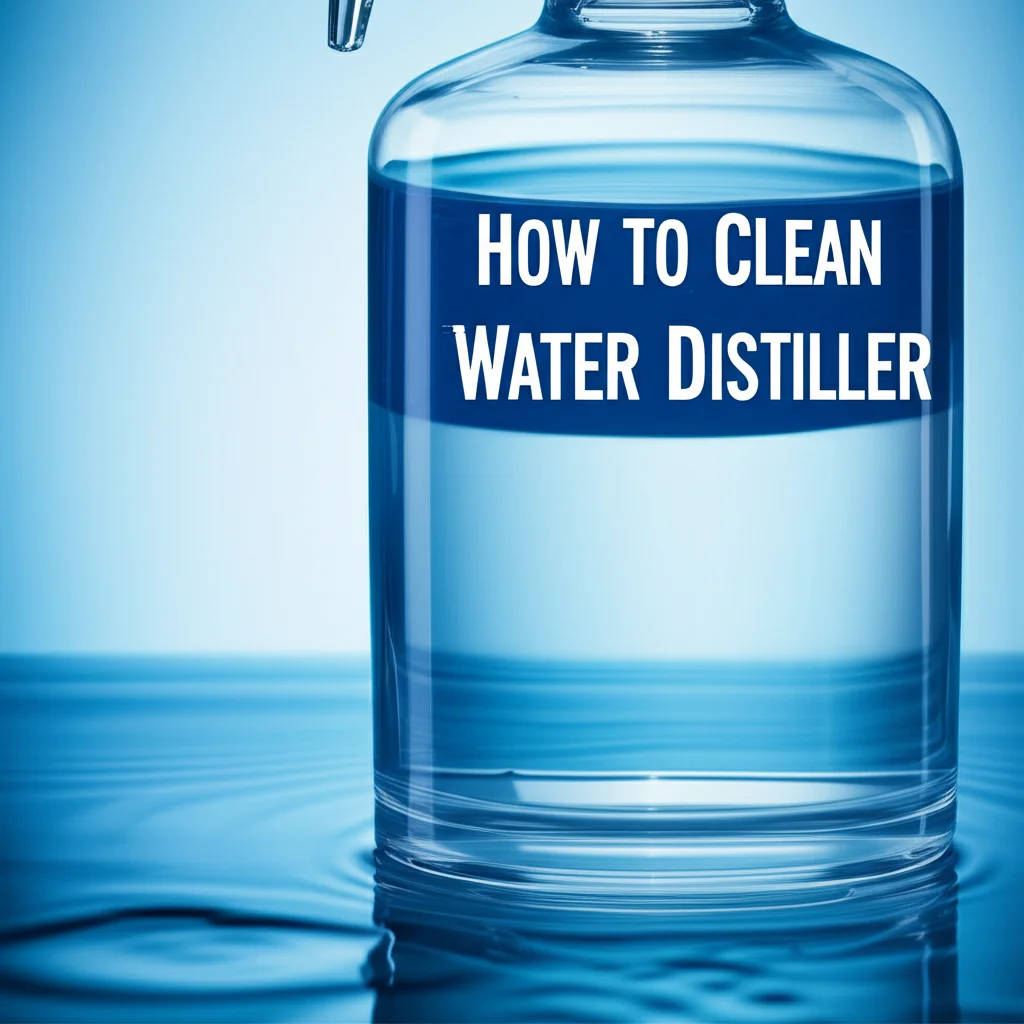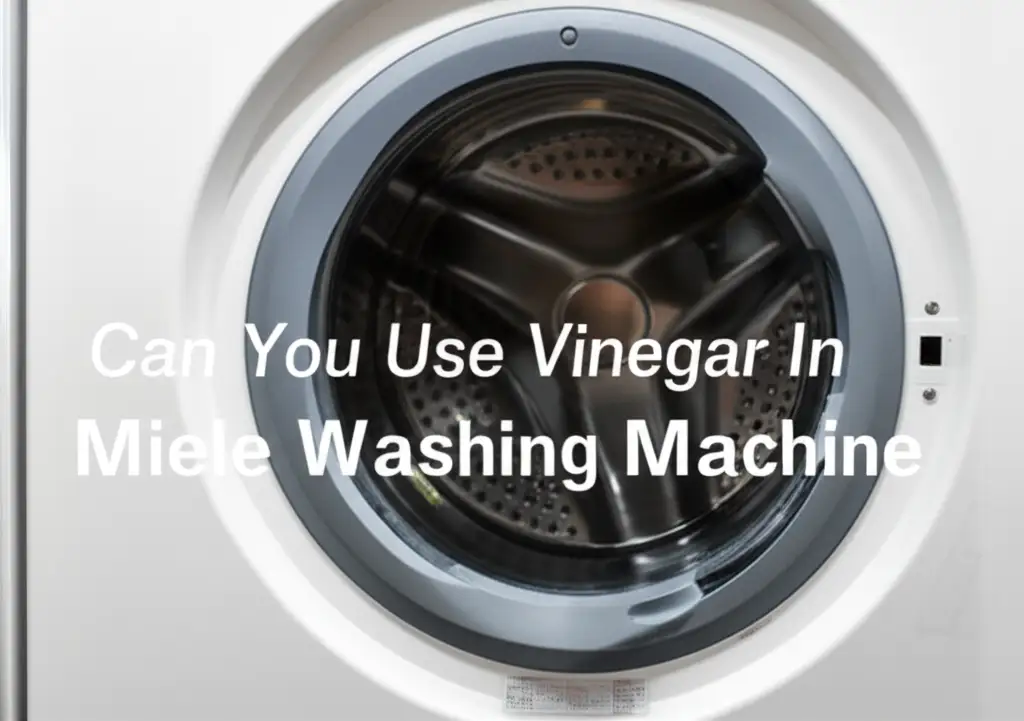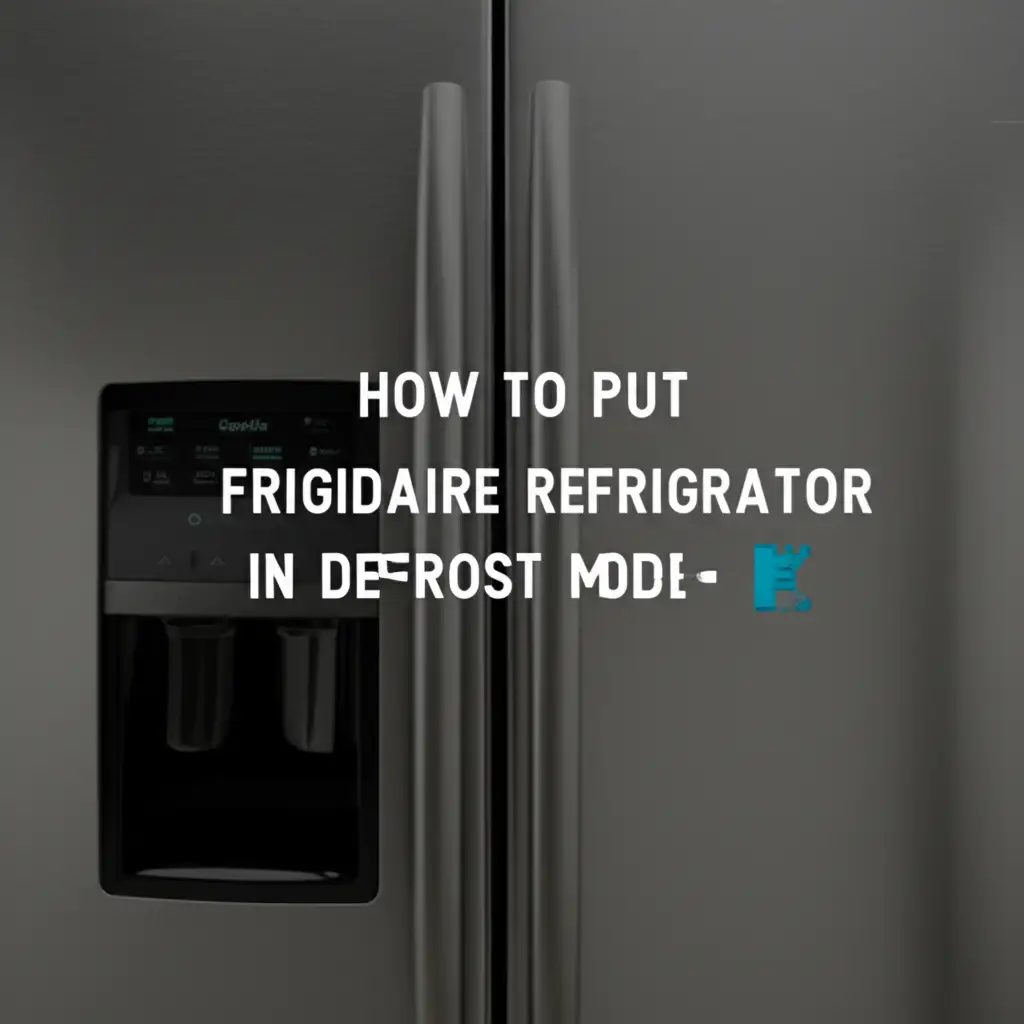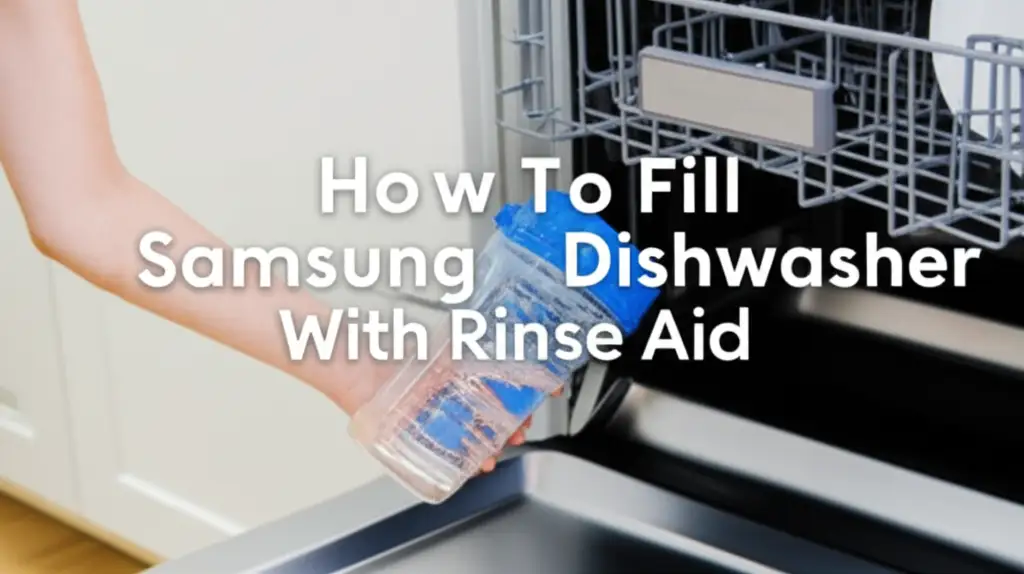· Todd Martin · Appliance Maintenance · 18 min read
How To Clean Water Distiller

Keep Your Water Distiller Clean for Pure Water
Your water distiller works hard to give you pure, clean water. It removes impurities and minerals through a boiling and condensation process. Over time, these minerals build up inside the boiling chamber. This mineral buildup, often called scale, can affect your distiller’s performance. It can also impact the quality of the water it produces. Cleaning your water distiller regularly keeps it working well. It ensures you always get the purest water. I find that regular cleaning makes a big difference in my distilled water’s taste and clarity.
This article shows you how to clean your water distiller. We cover everything from understanding mineral buildup to choosing the right cleaning agents. You will find step-by-step instructions for a thorough cleaning. We also offer tips for daily care and maintenance. Following these steps helps extend your distiller’s life. It also maintains the high purity of your water. Let’s make sure your distiller stays in top condition.
Takeaway
- Regularly clean your water distiller to prevent mineral buildup.
- Use natural descaling agents like citric acid or white vinegar.
- Follow a step-by-step cleaning process for effective results.
- Maintain daily habits to reduce frequency of deep cleaning.
- Ensure pure water production and extend appliance lifespan.
Quick Answer
To clean a water distiller, first unplug it and let it cool. Then, empty any remaining water. Mix citric acid or white vinegar with water and pour into the boiling chamber. Let it soak for several hours or overnight. Finally, scrub away loosened mineral deposits, rinse thoroughly, and dry all components.
Understanding Your Water Distiller’s Enemy: Mineral Buildup
A water distiller transforms tap water into highly purified water. It does this by boiling the water and then condensing the steam back into liquid. During this process, dissolved solids and minerals do not evaporate. They stay behind in the boiling chamber. These minerals accumulate over time. They form a hard, crusty layer known as scale or mineral buildup.
The rate of mineral accumulation depends on your tap water’s hardness. Hard water has a high concentration of minerals like calcium and magnesium. If your home has hard water, your distiller will accumulate scale faster. This scale looks like a white or off-white crust. It often forms on the bottom and sides of the boiling chamber. I see this buildup quickly if I forget to clean my distiller often enough.
Ignoring this buildup causes several problems. First, it reduces the distiller’s efficiency. The scale acts as an insulator. This means the heating element needs more energy to boil the water. This increases your electricity bill. Second, severe buildup can damage the heating element. This shortens the lifespan of your appliance. Third, small particles of scale can break off and enter your distilled water. This compromises the water’s purity. Cleaning hard water stains, whether on a distiller or other surfaces, uses similar principles. You can learn more about general hard water stain removal methods.
Hard water spots appear on many surfaces if not cleaned. Thinking about other items, you can see these on glass too. You might have noticed similar white spots on your shower glass. If you need to tackle those, consider methods for cleaning hard water stains off shower glass. For stainless steel surfaces, the problem is also common. Learn how to clean hard water stains from stainless steel sink to protect your appliances. Preventing this buildup keeps your distiller working well. It also keeps your water truly pure.
Gathering Your Cleaning Arsenal: What You Need
Before you start cleaning your water distiller, collect all necessary items. Having everything ready makes the process smoother. You will use common household products. These are safe and effective for descaling. I always make sure I have these things on hand before I begin.
First, you need a descaling agent. Citric acid is the most recommended option for water distillers. It is a natural acid found in citrus fruits. You can buy it in powdered form online or at home goods stores. It is very effective at dissolving mineral deposits. It is also food-grade and leaves no harmful residues. Many distiller manufacturers include a small packet of citric acid with their machines.
White vinegar is another excellent descaling agent. It is readily available and inexpensive. White vinegar contains acetic acid, which dissolves mineral scale. Use undiluted white vinegar for tough buildup. For lighter scale, you can dilute it with water. Vinegar also works well for cleaning many other areas in your home. For example, you can use it to clean glass with vinegar. This shows its versatility as a cleaning agent.
You also need a soft brush or sponge. A bottle brush works well for reaching inside the boiling chamber. Avoid abrasive scrubbers like steel wool. These can scratch the distiller’s stainless steel interior. Scratches can create rough spots where minerals can adhere more easily. I prefer using a soft-bristled brush that can reach into all corners.
Finally, have some clean cloths ready. These are for wiping down surfaces and drying components. Microfiber cloths are good for this. They absorb water well and leave no lint. Having the right tools makes cleaning simple. It helps you protect your distiller.
- Cleaning Agents:
- Citric acid (powdered form)
- White vinegar (undiluted)
- Cleaning Tools:
- Soft brush (e.g., bottle brush)
- Soft sponge
- Clean cloths (microfiber recommended)
- Safety Gear (Optional but Recommended):
- Rubber gloves (to protect hands from acids)
Step-by-Step Guide: Cleaning Your Water Distiller
Cleaning your water distiller is a straightforward process. Following these steps ensures a thorough and effective clean. This will remove mineral buildup. It will also restore your distiller’s performance. I follow these steps every time I clean my own distiller.
1. Preparation and Safety First
Always start by unplugging your water distiller. Let the unit cool down completely. This prevents burns and electrical hazards. Never attempt to clean a hot distiller. Empty any remaining water from the boiling chamber. Remove the lid and the collection jug. Discard any old water in the jug. Make sure the boiling chamber is completely empty before adding cleaning solutions. Safety is important when working with appliances.
2. Applying the Descaling Solution
Now, it is time to tackle the mineral buildup. You have two main options: citric acid or white vinegar.
- Using Citric Acid:
- Add 1-2 tablespoons of powdered citric acid to the empty boiling chamber.
- Pour in enough hot water to cover the mineral scale. Make sure it reaches the highest point of the buildup. Do not fill past the max fill line.
- Stir the solution gently to help dissolve the citric acid.
- Using White Vinegar:
- Pour 1-2 cups of undiluted white vinegar into the boiling chamber.
- Add enough hot water to cover all the scale, if needed. The vinegar should be the primary component.
- For light scale, you can use a 1:1 ratio of vinegar to water. For tough scale, use more vinegar. This is similar to how you might clean your hot water heater with vinegar for descaling purposes.
3. Soaking for Effective Descaling
Once you have added the descaling solution, let it soak. The soaking time depends on the severity of the mineral buildup. For light scale, 1-2 hours may be enough. For heavy, stubborn deposits, let it soak overnight (6-8 hours). The acid works to dissolve the minerals during this time. Do not turn the distiller on while the descaling solution is inside. Just let it sit.
4. Scrubbing and Removing Loosened Scale
After soaking, most of the scale should be soft or dissolved. Pour out the descaling solution. Use a soft brush or sponge to gently scrub the inside of the boiling chamber. Focus on any remaining mineral deposits. The deposits should come off easily. Do not use abrasive pads. These can scratch the stainless steel. If some scale remains, you can repeat the soaking process. I often find a second short soak clears up any last bits.
5. Thorough Rinsing
Rinsing is a crucial step. It removes all traces of the descaling agent and loosened scale. Fill the boiling chamber with clean tap water. Swirl the water around and then empty it. Repeat this rinsing process several times. I recommend at least three to four rinses. This ensures no residual taste or smell from the cleaning agent. You might also run a cycle of plain water through the distiller without collecting it. This flushes the internal components.
6. Drying and Reassembly
After rinsing, dry the boiling chamber completely. You can use a clean cloth or air dry it. Ensure all components are dry before reassembling the distiller. This prevents mildew or odors. Once dry, put the lid back on and place the collection jug. Your water distiller is now clean and ready to produce pure water again. Regular cleaning like this maintains water quality. It also extends your distiller’s operating life.
Dealing with Stubborn Stains and Residue
Sometimes, even after a standard cleaning cycle, you might find stubborn stains or particularly thick residue in your water distiller. This is common with very hard water. These residues need extra attention. Do not give up if the first clean does not remove everything. I have encountered this many times. There are ways to handle these persistent issues.
For very thick mineral deposits, consider a stronger citric acid solution or a longer soaking time. Instead of just 1-2 tablespoons, you might use 3-4 tablespoons of citric acid for extreme buildup. If using vinegar, fill the chamber completely with undiluted white vinegar. Let it soak for 12-24 hours. The extended contact time helps break down the most resistant scale. After a long soak, try gently scraping with a plastic scraper. Avoid metal tools. Metal can scratch the distiller’s interior surface.
Another method for tough spots is to heat the cleaning solution slightly. After adding the citric acid and water, or just vinegar, you can turn the distiller on for about 15-20 minutes. Do not let it complete a full cycle or boil dry. Just warm the solution. The heat often speeds up the descaling process. Then, turn it off and let it cool completely. After cooling, proceed with scrubbing and rinsing. This warming technique helps especially with very old or dense scale.
Sometimes, it is not just mineral scale. You might see discolored stains. These can be from minerals like iron, which leave reddish-brown marks. For these, a paste made of baking soda and a little water can help. Apply the paste to the stain. Let it sit for 15-30 minutes. Then, gently scrub with a soft brush. Baking soda is mildly abrasive and can lift stains without damaging the surface. Afterward, rinse thoroughly. Similar principles apply to other hard water stains you might find around your home. For example, if you notice hard water stains on chrome fixtures, specific cleaning methods are needed to restore their shine without damage. You can find guidance on how to clean hard water stains off chrome to keep them looking new.
Remember, patience is key with stubborn residue. Do not rush the process or use harsh chemicals. Stick to natural acids like citric acid or vinegar. They are safe for food-grade appliances. Repeated treatments with proper soaking and gentle scrubbing will eventually restore your distiller. It will look clean and perform perfectly.
Regular Maintenance for Long-Lasting Purity
Cleaning your water distiller periodically is important. But regular daily and weekly maintenance also plays a vital role. These small habits reduce mineral buildup significantly. They extend the time between deep cleaning sessions. They also ensure consistent water purity. I make these practices part of my routine.
After each distillation cycle, empty the boiling chamber. Do not let water sit in it. The heat from the previous cycle can bake residual minerals onto the surface. This makes them harder to remove later. Emptying it immediately prevents this. Give the boiling chamber a quick rinse with fresh water. This washes away loose minerals before they can solidify. I usually do this as soon as the cycle finishes.
Once a day, or every few cycles, wipe the inside of the boiling chamber. Use a clean cloth or soft sponge. This removes any initial mineral dust or residue. It prevents it from hardening into scale. This quick wipe-down takes less than a minute. It saves you much longer descaling efforts later. Think of it like wiping down your kitchen counters after cooking. Small actions make a big difference.
Consider the quality of your input water. If your tap water is extremely hard, you might need to clean your distiller more often. Some people use a basic water filter before distillation. This reduces the mineral load entering the distiller. While the distiller removes almost everything, pre-filtering can extend the life of your distiller and reduce cleaning frequency. This is similar to how you might use a water filter in your fridge to improve taste and reduce scale buildup in the dispenser. Keeping other water-related appliances clean is important too. If you also use a water boiler, regular descaling prevents mineral buildup there as well.
Periodically check the distiller’s carbon filter (if it has one). Most distillers have a post-distillation carbon filter. This filter removes any lingering odors or tastes. Replace it according to the manufacturer’s recommendations. A dirty carbon filter can affect water taste. It does not affect the boiling chamber’s cleanliness, but it is part of overall water purity. Regular maintenance keeps your distiller working efficiently. It means more pure water with less hassle.
Cleaning the Collection Jug and Other Components
When you clean your water distiller, do not forget the collection jug and other removable parts. These components also need attention. They can accumulate residues or develop odors over time. Keeping them clean ensures your distilled water stays fresh and pure. I always clean my jug thoroughly after descaling the main unit.
The collection jug, often made of glass or BPA-free plastic, holds the distilled water. Over time, it might develop a film or slight discoloration. This is usually from air particles or residual minerals that somehow transfer. Wash the jug with warm, soapy water. Use a bottle brush to reach the bottom and sides. A soft cloth also works well for glass jugs. Rinse the jug thoroughly with clean water afterward. Make sure no soap residue remains.
For persistent odors or a cloudy appearance in the jug, a vinegar rinse helps. Fill the jug with a solution of half white vinegar and half water. Let it sit for 30 minutes to an hour. Then, pour it out and rinse thoroughly with clean water. This removes odors and helps clear cloudiness. This is similar to how you might clean other water containers. If you often use reusable water bottles, you know they need regular cleaning to prevent mold and odors. For larger containers, such as 5-gallon water bottles, a bottle brush and vinegar rinse are also effective.
The nozzle or spout where the distilled water drips into the jug can also collect dust or minerals. Wipe this area with a damp cloth. If it is detachable, you can remove it and wash it separately with soap and water. Ensure it is completely dry before reattaching. Some distillers have a drip tray. Clean this tray regularly to prevent mold or mildew growth. Wash it with warm, soapy water and rinse well.
Finally, consider the lid of the boiling chamber. It can also develop mineral spots. Wipe it down with a damp cloth or sponge. For stubborn spots, use a little citric acid solution or vinegar on a cloth. Then, rinse thoroughly. Ensuring all parts are clean prevents cross-contamination. It also keeps your entire water purification system hygienic. Proper care for all components guarantees the best quality distilled water.
Troubleshooting Common Distiller Cleaning Issues
Even with a good cleaning routine, you might encounter some common issues. Knowing how to troubleshoot these problems helps you keep your distiller working perfectly. I have faced a few of these myself. Here are some tips for common cleaning-related concerns.
One frequent issue is lingering white residue after cleaning. This often means the scale was very thick. The descaling solution loosened it, but did not dissolve all of it. In this case, repeat the cleaning process. Use a fresh solution of citric acid or undiluted white vinegar. Allow a longer soaking time, possibly overnight. Then, scrub vigorously with a soft brush. Sometimes, a second, longer soak is all it takes to remove the last bits.
Another common problem is a strange taste or smell in the distilled water after cleaning. This usually happens if you did not rinse the distiller thoroughly enough. Residual cleaning solution can affect water taste. To fix this, rinse the boiling chamber several more times with clean tap water. You can also run one or two full distillation cycles using only plain tap water. Discard the water from these cycles. Do not drink it. This helps flush out any remaining chemical traces. The taste should then return to normal.
If your distiller heats up but produces very little water, or takes much longer than usual, it likely has significant scale buildup. The scale insulates the heating element. This reduces its efficiency. A thorough descaling is necessary. If the problem persists after cleaning, the heating element might be damaged. Contact the manufacturer or a repair service. This indicates a problem beyond simple cleaning.
Occasionally, you might find mold or mildew, especially if the distiller or jug was stored wet. Mold typically appears as black spots. For this, a solution of white vinegar is highly effective. Vinegar kills most mold types. Fill the affected area with undiluted white vinegar. Let it soak for an hour. Then, scrub with a brush. Rinse very thoroughly afterward. If you encounter mold in other appliances, such as your refrigerator water dispenser, vinegar can often be a safe and effective solution there as well.
Preventing issues is always better than fixing them. Regular quick rinses and daily wiping reduce the chances of serious buildup or odors. If you consistently face heavy scale, consider pre-filtering your tap water. This is an investment that can prolong your distiller’s life.
Frequently Asked Questions
How often should I clean my water distiller?
Clean your water distiller based on your water hardness and usage. For hard water areas or daily use, clean it weekly or every 10-15 gallons. In soft water areas, monthly cleaning might be enough. Look for visible mineral buildup; this is the best indicator that cleaning is needed. Regular maintenance reduces deep cleaning frequency.
Can I use bleach to clean my water distiller?
No, do not use bleach to clean your water distiller. Bleach is a harsh chemical. It can damage stainless steel parts. It can also leave harmful residues that are difficult to rinse away completely. These residues can then contaminate your distilled water. Stick to natural and food-safe descaling agents like citric acid or white vinegar for safety and effectiveness.
What is the white residue in my distiller?
The white residue in your distiller is mineral scale. It consists primarily of calcium and magnesium carbonate. These minerals are naturally present in tap water, especially hard water. When water boils, these minerals do not evaporate. They are left behind and solidify on the heating element and boiling chamber walls. This is a normal byproduct of the distillation process.
Is vinegar safe for cleaning water distillers?
Yes, white vinegar is safe and effective for cleaning water distillers. It contains acetic acid, a mild acid that dissolves mineral deposits. Use undiluted white vinegar for best results. Always rinse the distiller thoroughly several times after cleaning with vinegar. This removes any lingering vinegar smell or taste from the appliance.
Why does my distilled water taste off after cleaning?
An off-taste in distilled water after cleaning usually means you did not rinse the distiller enough. Residual cleaning agent, like citric acid or vinegar, can affect the water’s taste. To fix this, rinse the boiling chamber several more times with clean water. You can also run a cycle or two of plain water through the distiller and discard it.
Can cleaning extend my distiller’s life?
Yes, regular cleaning significantly extends your water distiller’s lifespan. Mineral buildup forces the heating element to work harder. This increases wear and tear. Removing scale allows the distiller to operate efficiently. It prevents overheating and damage to internal components. Proper cleaning maintains peak performance and durability for years.
Conclusion
Cleaning your water distiller is not just a chore. It is an essential step to ensure you always have access to the purest water. We have covered the importance of understanding mineral buildup and how it affects your distiller. We also provided a comprehensive guide on how to clean water distiller models effectively. Using simple, natural agents like citric acid or white vinegar makes the process easy and safe. Regular maintenance, combined with thorough cleaning, keeps your appliance efficient.
By following these steps, you prevent common issues like reduced efficiency or strange-tasting water. You protect your investment in pure water. Remember to prioritize safety by unplugging the unit and letting it cool. Always rinse thoroughly to avoid any lingering residues. Taking good care of your water distiller means it will take good care of you. It will provide clean, healthy water for all your needs. Make cleaning your distiller a regular part of your home maintenance routine. Enjoy the benefits of pure, great-tasting water every day.





